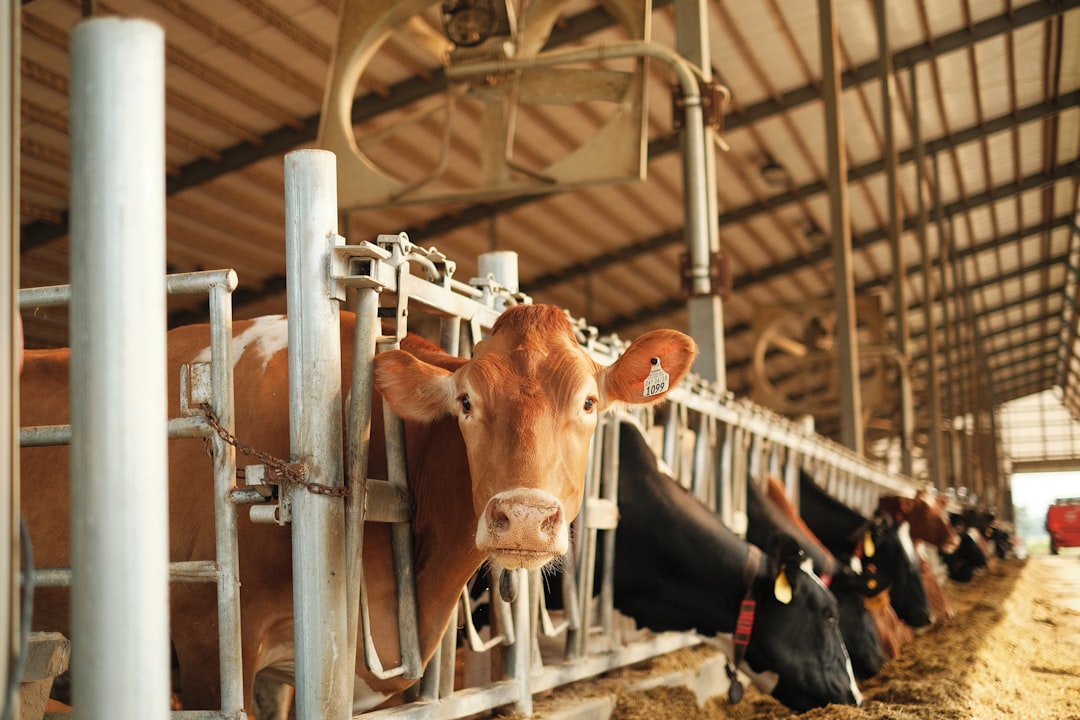Starting a dairy farm, whether it's a smallholder operation or a large commercial venture, requires careful planning and consideration of various factors. These include climate conditions, farm scale, infrastructure, management practices, and market demand. Here's a comprehensive guide to help you establish a thriving dairy farm across different climates and scales.
Climate Considerations
Climate plays a crucial role in dairy farming, affecting milk production, animal health, and feed availability. Different regions face unique challenges:
-
Heat Stress: In warmer climates, such as those found in tropical regions or deserts, heat stress can significantly reduce milk production and fertility. Implementing cooling systems, providing adequate shade, and using sprinklers can mitigate these effects.
-
Rainfall and Flooding: Areas with high rainfall, like parts of the Northeast U.S., need strategies to manage runoff and prevent soil erosion. Techniques include using cover crops and improving drainage systems.
-
Drought Conditions: Regions experiencing droughts, such as parts of Australia, require efficient water management systems and long-term feed storage strategies.
Scale Considerations
The scale of your dairy farm impacts operational costs, efficiency, and market competitiveness:
-
Smallholder Farms: These operations often focus on local markets and may benefit from diversified products or organic practices. They require efficient management of limited resources and can leverage community support.
-
Large Commercial Operations: These farms enjoy economies of scale, reducing production costs per unit. They often invest in advanced technology and vertical integration to maintain quality and adapt to market changes.
Key Management Practices
Regardless of scale or climate, several best management practices are essential for dairy farms:
-
Feed and Nutrition: Ensure a balanced diet for your cattle. This may involve growing your own fodder or purchasing high-quality feed.
-
Animal Health: Implement effective health management strategies, including regular veterinary checks and vaccinations.
-
Housing and Infrastructure: Provide adequate housing with proper ventilation and cleanliness. For larger operations, consider advanced cooling systems and automated milking technologies.
-
Marketing and Distribution: Develop a comprehensive marketing plan that aligns with your target market, whether it's local consumers or large retailers.
Adaptation Strategies
To remain viable, dairy farms must adapt to changing environmental conditions and market demands:
-
Climate Adaptation: Use climate projections to inform infrastructure decisions, such as building more resilient barns or implementing efficient irrigation systems.
-
Market Adaptation: Stay informed about consumer trends and regulatory changes. Consider diversifying your product line to include value-added dairy products or organic options.
Conclusion
Establishing a successful dairy farm requires a deep understanding of local climate conditions, efficient management practices, and strategic planning. Whether you're operating a smallholder farm or a large commercial operation, adapting to environmental challenges and market demands is crucial for long-term sustainability and profitability.
Additional Resources
For more detailed information on dairy farming practices and climate adaptation strategies, consider the following resources:
-
Climate Change and Dairy Farming: Explore how climate change impacts dairy operations and strategies for adaptation through webinars and regional assessments.
-
Best Management Practices: Review comprehensive guides on best management practices for smallholder dairy farmers, including forage production and animal health management.
-
Dairy Farming Business Plans: Develop a robust business plan that includes market analysis, investment strategies, and operational management.
Citations:
- http://www.climatehubs.usda.gov/hubs/northeast/topic/weather-and-climate-considerations-dairy
- https://www.dairyaustralia.com.au/climate-and-environment/climate-risk-and-adaptation
- https://www.publish.csiro.au/ebook/chapter/9781486306473_Chapter_07
- https://www.indiafilings.com/learn/dairy-farming-business-plan/
- http://www.ers.usda.gov/amber-waves/2020/august/scale-economies-provide-advantages-to-large-dairy-farms
- https://www.thebullvine.com/news/mega-dairy-revolution-inside-the-worlds-10-largest-dairy-farms/
- https://nysclimateimpacts.org/explore-the-assessment/case-studies/a-tale-of-two-dairies/
- https://www.thecattlesite.com/articles/2527/recommendations-for-smallholder-dairy-development
- https://sjsr.scione.com/cms/fulltext.php?id=95
- https://landcareaustralia.org.au/project/dairys-climate-changing-future/
- https://www.mpi.govt.nz/agriculture/dairy-farming/dairy-farm-case-studies/
- https://www.sciencedirect.com/science/article/abs/pii/S0308521X16306977
- https://www.dairyaustralia.com.au/climate-and-environment/climate-risk-and-adaptation/dairy-farm-climate-impacts
- http://www.ers.usda.gov/data-products/charts-of-note/chart-detail?chartId=78322
- https://www.sciencelearn.org.nz/resources/3026-climate-change-implications-for-dairy-farming
- https://www.mdpi.com/2077-0472/14/12/2369
- https://www.sciencedirect.com/science/article/pii/S2405844022008696
- https://cowsultants.org/case-studies-successful-dairy-farming-models-around-the-world/
- https://www.dairyglobal.net/world-of-dairy/farm-visits/10-must-read-dairy-farm-stories-around-the-globe-in-2022/
- https://edepot.wur.nl/549592
- https://www.cafre.ac.uk/2023/06/14/prolonged-dry-weather-conditions-considerations-for-dairy-farmers/
- https://www.agroecology-transect.net/news/dairy-farmers-adaptation-strategies-in-uplands/
- https://fil-idf.org/dairy-declaration/climalait-adapting-to-climate-change-for-resilient-french-dairy-farms/
- https://edepot.wur.nl/166156
- https://www.teagasc.ie/media/website/publications/2017/Dairy-Farm-Infrastructure-Handbook-Moorepark2017-(V3).pdf
- https://www.fao.org/4/ai429e/AI429E05.htm
- https://www.teagasc.ie/media/website/publications/2016/Dairy-Manual-Section2.pdf
- https://www.fao.org/4/i1522e/i1522e.pdf
- https://ruminants.ceva.pro/dairy-production
- https://www.fao.org/4/i0588e/I0588E12.htm

Comments
No comments yet. Be the first to comment!
You must be logged in to comment. Login